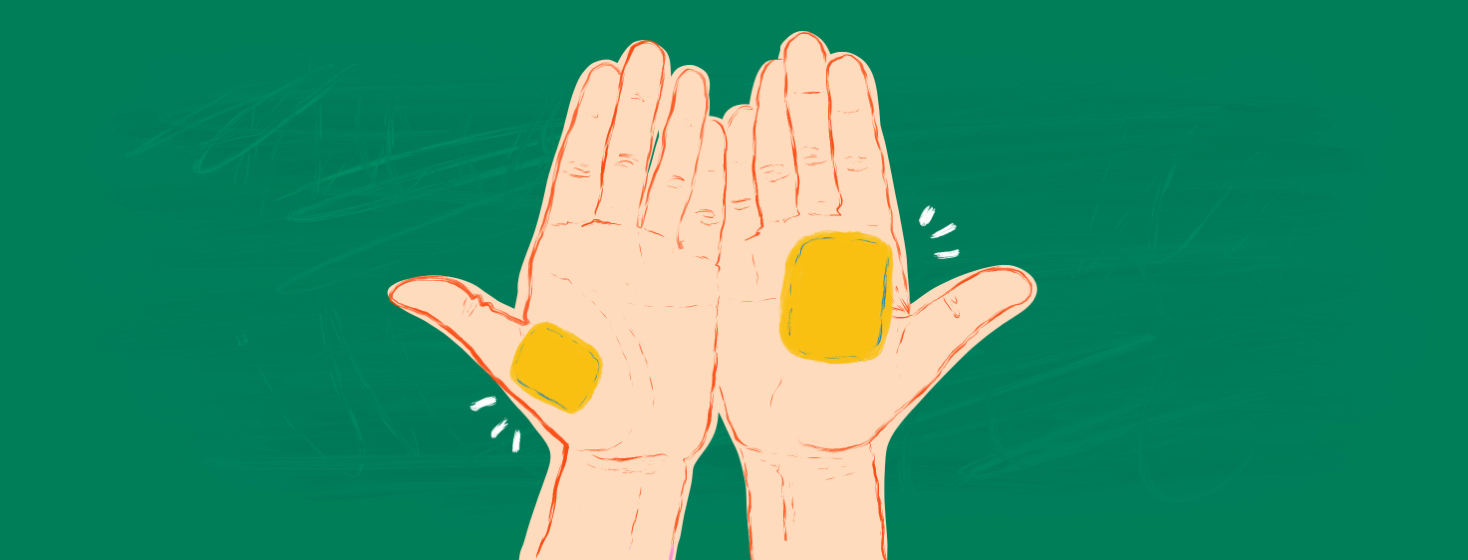How I Use Hydrocolloid Bandages
This year in May, I ended up catching COVID and had the worst TSW (topical steroid withdrawal) and eczema flare I’ve had in many years.
Right when I got sick and tested positive, my skin actually cleared up quite well. But as soon as the symptoms of COVID started to improve, my skin blew up completely. I had open, oozing wounds all over my face, neck, and chest. And this time, I had a big wound covering my entire right palm. This hadn’t happened in a couple of years prior. I had forgotten how difficult hand eczema can be.
As I was going through my first aid kit at home and rummaging for my thermometer, among other things I don’t use often anymore (thankfully), I found some brand new, unopened hydrocolloid bandages. To be honest, I completely forgot these existed.
What are hydrocolloid bandages?
In case you haven’t been introduced to these beauties before, hydrocolloid bandages are a special kind of bandage for various skin concerns. “Hydrocolloid” refers to the ingredients in these bandages that form a kind of gel over your skin when they mix with body fluids, such as pus or any kind of exudate. The inner layer provides this and absorbs any bodily fluids or substances that seep out. The other layer covers it up, sealing it all in and preventing bacteria or other debris from getting into the wound. This creates a moist and protective environment for wound healing.1
They work especially well on oozy eczema or even burns, or other skin conditions such as acne – anything that produces fluid, essentially. Another awesome thing about them is that they are waterproof, but not showerproof, and can be kept on the wound for up to 7 days, typically. They come in all sorts of various shapes and sizes. You can also just cut them into any size and shape you want, as the entire bandage is adhesive.
This or That
Have you used hydrocolloid bandages for your eczema?
Trying out different brands
In this case, I had some DuoDerm brand left a friend from the UK sent me a long time ago. I decided to try it on my palm on a whim, not really expecting anything. I recalled using it in the earlier days of topical steroid withdrawal, but to be honest, mostly to hide little cuts and openings on my hands and fingers. I didn't really feel like it helped much, so I hadn't used hydrocolloid bandages for eczema before. So, this time, not wanting to wear gloves when I finally ventured outside after COVID and quarantine, I put half of the bandage on my palm. It’s been way too hot for gloves in the middle of summer anyway. I honestly did not even except anything, yet a few days after wearing the bandage, when I took it off, I saw the wound on my palm was closing. I was pleasantly surprised and happy.
I decided to order more hydrocolloid bandages, since I only had a couple left, and they were quite old. So I ordered a pack on Amazon, thinking they were going to help just as much. Unfortunately, the ones I bought were nothing like the DuoDerm. They were thinner, seemed to hold in moisture more, and didn’t stick as well. I was extremely disappointed. Eventually, I decided to have a UK friend send me some from there, as they are much cheaper, so it all worked out by the end.
Finally healing
The big wound covering my entire palm started out cracking, painful, oozing, etc., to the point I could no longer even wash dishes and do normal daily tasks without wearing gloves. However, with the bandage on, it protected the wound so I could do these things AND healed it all at the same time.
Now, my palm is almost completely healed, with just a bit of dry patchy areas left. Hooray for unexpected finds and trying different things at different parts of our journey. In the earlier days of topical steroid withdrawal, these did very little to nothing for me, and this time – they have been a game changer! Our bodies are always changing, and just because something may not have worked once – doesn’t mean it never will.

Join the conversation